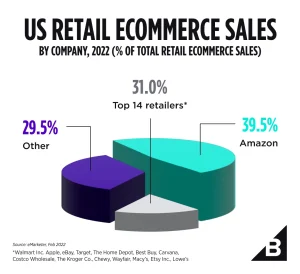
You know that moment when you’re cooking and your hands are covered in flour, and you just need to reorder that one ingredient? Or you’re driving and realize you forgot to buy a birthday gift? That’s where voice commerce swoops in. It’s not some far-off sci-fi concept anymore. It’s here, and it’s changing how people shop.
For online retailers, optimizing for voice search isn’t just a nice-to-have. It’s quickly becoming a necessity. But how do you optimize your store for a customer you can’t see, who’s asking questions instead of typing keywords? Let’s break it down.
Understanding the Voice Search Mindset
First things first. Typing a search and speaking one are fundamentally different. When we type, we’re brief, almost robotic. “best running shoes men.” But when we speak? We ask full, conversational questions. “Hey, what are the best running shoes for men with flat feet?”
This shift is everything. It means your entire SEO strategy needs to pivot from keywords to questions, from concise phrases to natural language. People aren’t just searching; they’re conversing with their devices. Your content needs to be ready with an answer.
Core Voice Commerce Optimization Tactics
1. Master the Art of Conversational Keywords
Forget (or at least, expand beyond) those short-tail keywords. You need to target long-tail, question-based phrases. Think about the questions a real person would ask at every stage of the buying journey.
- Informational: “How do I measure my wrist for a watch?”
- Commercial: “What’s the best organic coffee brand?”
- Transactional: “Order more Tide Pods.”
Tools like AnswerThePublic or even Google’s “People also ask” sections are goldmines for this. Weave these questions and their answers naturally into your product descriptions, blog content, and FAQ pages.
2. Structure Your Data for Snippets (The Holy Grail)
Voice assistants love to provide quick, direct answers. Where do they get them? Often from featured snippets—position zero in search results. If you can win this spot, you dramatically increase your chances of being the chosen result for a voice search query.
To do this, structure your content to directly answer questions. Use clear headers that pose the question, followed by a concise, 40-60 word answer. Implement schema markup (like FAQPage or Product schema) on your site. This code acts as a translator, helping search engines understand your content’s context and making it infinitely easier for them to pull your answer for a snippet.
3. Ruthlessly Optimize for Local “Near Me” Searches
A massive chunk of voice searches are local. “Where’s the nearest open hardware store?” or “Find a florist delivering today.” If you have a physical presence, this is non-negotiable.
- Claim and optimize your Google Business Profile. Every single field matters.
- Ensure your NAP (Name, Address, Phone number) is consistent across the entire web.
- Create location-specific landing pages and content.
4. Speed Is Non-Negotiable
Honestly, if your site takes more than three seconds to load, you’re already out of the race. Voice search users expect instant answers. A slow-loading page will never be served as a voice result. Use tools like Google PageSpeed Insights to identify and fix bottlenecks. Compress images, leverage browser caching, and consider a Content Delivery Network (CDN). This is technical, sure, but it’s the bedrock everything else sits on.
Designing the Voice Commerce Experience
Okay, so someone finds you via voice. The next step is making the actual purchase process seamless. This is where many brands drop the ball.
Simplify the Path to Purchase
A voice command might initiate a search, but the final purchase often still happens on a screen. Make that journey frictionless. Enable voice-assisted shopping features like “reorder” or “buy it again.” Allow customers to build and name shopping lists directly on your site. This way, a command like “add milk to my weekly grocery list” can actually work.
Build a Rock-Solid FAQ Page
Don’t treat your FAQ page like an afterthought. This is prime real estate for voice search optimization. Structure it with clear, question-based headings and provide detailed, snippet-friendly answers. Cover everything from shipping policies and return instructions to product specifics and compatibility questions.
Looking Ahead: The Future of Voice Shopping
The tech is still evolving. Visual responses on smart displays are becoming more common, blending voice and screen. And with advancements in AI, the ability for assistants to handle complex, multi-product purchases is growing.
The retailers who will win at voice commerce are the ones who start now. They’ll be the ones whose answers are heard, whose products are easily found, and whose buying process feels effortless. It’s about building a presence that exists not just on a screen, but in the rhythm of everyday conversation.
It starts with a single question. Will your brand have the answer?








